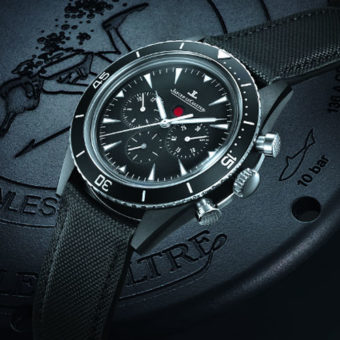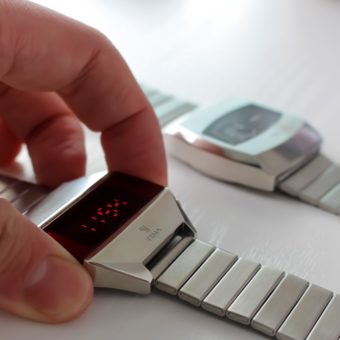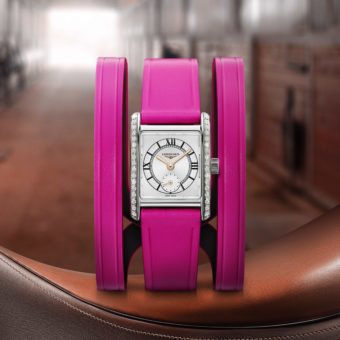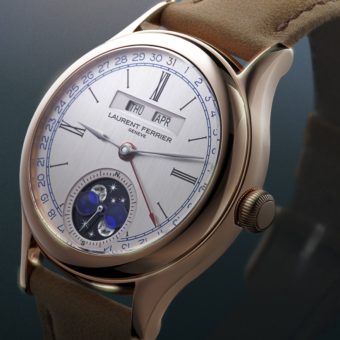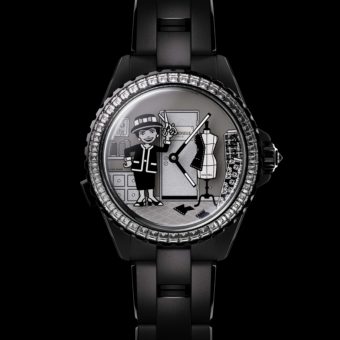
Upon entering the HW booth, I encountered a sage horological writer and friend. He asked me simply, “Have you seen it?” I had not. He said, “See if you can guess how it works.” Following the demonstration, I had to admit that my initial guess missed the mark. Of the Opus 12, Harry Winston says that nothing like it has been done before. I can’t dispute that claim. The idea sprang from the mind of watchmaker Emmanuel Bouchet in 2009. Working with designer Augustin Nussbaum and the Harry Winston company, Bouchet brought Opus 12 to life.

So, how does it work? At each of the 12 hour positions there is a two-sided marker about 5 mm long. One side of the marker is longer, representing the minutes hand, and the other side is shorter, signifying the hour hand. Each marker, or hand, is attached to a driving wheel, and each displays a blue face when it indicates the time and a neutral face when it does not. For example, at 10:10, a shorter blue hand will appear at 10 o’clock and a longer blue hand at 2 o’clock. The other hour markers will be neutral. What if it is 10:12? A center-mounted retrograde hand displays the minutes between the fives. There is also a traditional small seconds hand just below the retrograde minutes.
The hands at the 12 hour markers are activated by two crown wheels turning around the dial. Both crown wheels have toothed sections that engage the driving wheels of the hands. The outer crown wheel, which activates the minutes hands, goes around the dial in one hour, advancing at 5-minute intervals from one station to the next. A first toothed section engages the wheel of the next station and the 5-minute hand turns over to its indicating side. In parallel, a second toothed section leaves the previous station and the minutes hand turns over to its neutral side. In this way, every 5 minutes, the next hour marker flips to become blue, and the one before it flips to become neutral. This happens so quickly that it creates an optical illusion that a single hand is jumping from hour marker to hour marker.
At the change of the hour, the Opus 12 puts on a real show. The inner crown wheel, which has remained stationary for 60 minutes, advances around the dial, driving the rotation of the hour hands in rapid succession. Like a crowd at a sports event doing the wave, each hour marker sequentially flashes blue for just a second.





